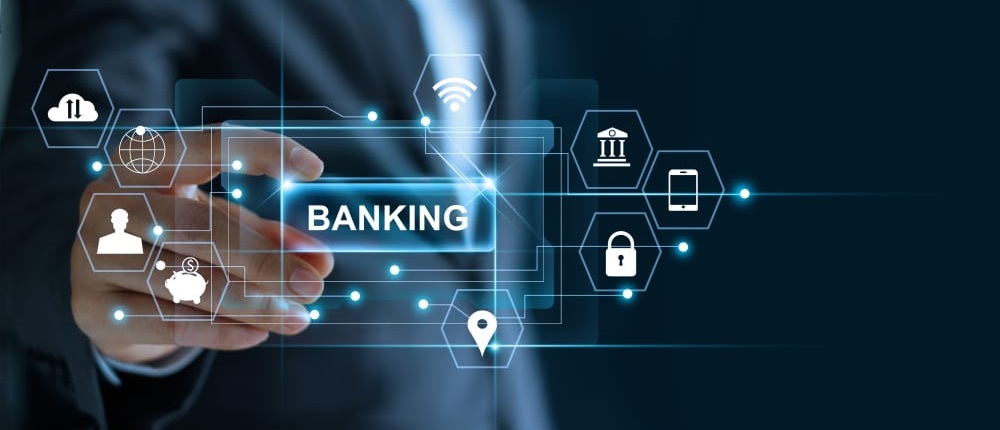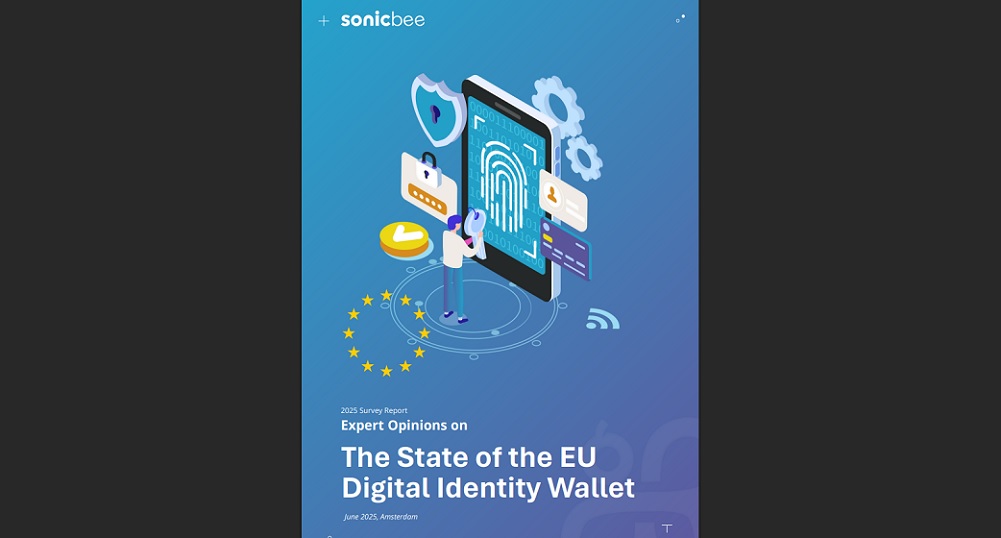FinVision: The Top Three Digital Transformation Lessons Of 2020

This turbulent year has sped up digital adoption in the financial services industry. Yet transformation is far from being done right. Read a list of lessons learnt in 2020, compiled from our FinVision event, along with a list of actions we think might kick digital change up a gear.
At the tail end of 2020, we can take a step back and survey the damage. The COVID-19 pandemic imposed restrictions, upended entire industries, disrupted businesses, froze investments, and created huge unemployment (projected to reach nearly 10% in OECD countries by the end of 2020, up from 5.3% at year-end 2019). While these developments combined to shrink the world economy by 4.5%, a new buzzword emerged: digital resilience.
From digital resilience….
Most of the organizations across various industries quickly adopted technology that allowed them to replicate face-to-face interactions, enable company-wide gatherings and meet with customers in a secure environment. That’s digital resilience. Experts at Global Workplace Analytics estimate that, by the end of 2021, up to 30% of the U.S. workforce will be working mostly remotely, while prior to the COVID-19 pandemic, just 3.6% of the workforce was working from home half-time or more.
According to IDC, the consulting firm, digital resilience also refers to “an organisation’s ability to leverage digital capabilities to not only restore business operations, but also capitalise on the changed conditions.” Some examples: China’s Ping An Bank increased the use of digital abilities by launching its Do It At Home service aimed at helping customers during the pandemic, in the process boosting customer engagement. In Singapore, UOB Bank managed to rethink some of its traditional operating models and started to offer digital applications that help SMEs run their businesses more efficiently.
Whether organizations were forced to ram pup their digital efforts to keep their businesses going or simply reacted quickly to gain momentum, one trend is certain: digital resilience became a significant area of investment in 2020. And, as IDC predicts, this investment will increase in 2021 as the global economy improves.
But is this good news?
…To digital winners
That depends on who you’re asking. In April, for instance, soon after the World Health Organization declared COVID-19 a “Pandemic”, tech giant Microsoft registered more than 200 million Microsoft Teams meeting participants in a single day, generating more than 4.1 billion meeting minutes. Later on, in October, the video conferencing startup Zoom Technologies reported it had 370,000 customers, nearly four times as many as a year ago. This can’t be anything but good news for the likes of Zoom and Microsoft. Which makes sense, since building tools to secure digital resilience is part of their core-business.
But what about the other side of the story – companies that, over the years, invested here and there in digitally transforming their businesses ?
Now comes the bad news. “The majority of digital transformations have not delivered the level of desired outcomes”, announced Teodor Blidarus, Co-Founder and CEO of FintechOS, in his opening address to FinVision, a virtual event hosted by the company in November.
This is backed up clearly by the research. IDC estimates that 70% of all digital transformation initiatives do not reach their goals. “Of the $1.3 trillion that was spent on digital transformation in 2018, it was estimated that more than $900 billion went to waste”, writes PwC.
What could possibly be going so wrong?
QUOTE 1:
70% of all digital transformation initiatives do not reach their goals – IDC
Learning 1: Digitisation is not enough – it needs to be done right
Whether it’s Europe, Asia, Africa or the USA, digitising financial services is a hot topic for design thinking and action. Many banks and insurance companies have been engaged in some level of digitization of the customer experience in the past few years, but the pandemic showed where the cracks lie and even made some appear much bigger.
First of all, crumbling infrastructure makes nimble thinking difficult. And excitement for change often disappears when teams get bogged down in the complexities of working with their organisation’s IT estate.
Let’s take a look at the banking sector – where major banks are frittering digital transformation budgets away for to two main reasons:
- Failure to automate end-to-end business processes (such as customer onboarding, account opening) resulting in fragmented solutions;
- Inability to build organisational capabilities and talent to sustain continuous development beyond initial Proofs of Concept.
But how can digitisation be done right? Souhail Haddaji, Managing Director at Niji and a speaker at November’s FinVision event, thinks that „Modular architecture is expensive and difficult to build from legacy systems, but it’s necessary if establishment banks want to remain relevant”.
Or, as Teodor Blidarus of FintechOS puts it, “digitisation can be best achieved through experimentation and adaptability rather than an overhaul transformation”.
Therefore, digitisation isn’t a journey with a beginning, middle and an end. It is a continuous state. The crucial words are “automation” and “continuity” – this was one take-away from FinVision.
QUOTE 2:
“Banks tend to be reactive and invest large amounts into <hygiene technology>, emulating other Fintech companies – therefore, they tend to be a few steps behind” – Melissa Stringer, 11:FS
Learning 2: Only the customer-centric will survive
Fintech is reshaping the sector everywhere. Unburdened by legacy systems and branch networks, digital challengers have the ability to respond quicker to market needs and offer superior customer experiences, all at a much lower cost.
As for banking, emerging entrants like neobanks, challenger banks, BigTechs, retailers and so on have pushed banks to embed technology in the business model and accelerate digital transformation so as to meet shifting customer needs.
But „banks tend to be reactive and invest large amounts into <hygiene technology>, emulating other Fintech companies – therefore, they tend to be a few steps behind”, said Melissa Stringer, Consulting Product Lead at 11:FS, during FinVision’s debate on customer-centricity in banking.
According to Keith Jordan, VP of Innovation at Mastercard, „banks want to be customer-centric, but there are so many factors that make it difficult for them to manoeuvre the change”.
Will they make it? Time will tell. But „only the customercentric will survive”, Sergiu Negut, Co-Founder, FintechOS concluded.
Learning 3: The future is open, the future is data
The financial services industry is stepping away from closed environments and systems and moving towards open environments, customer journeys and platforms. That means becoming “data-driven” has become a priority for banks and insurers. But what are the Implications? For the speakers at FinVision, there were a few things that should be kept in mind :
“Data is not information – one has to filter data through intelligence to get actionable insights” – Ed Herman, Global FSI Lead, Microsoft
“Creating intelligence from data means successfully consuming and managing data in all its forms” – Ed Herman.
“Financial Services organizations cannot avoid becoming multi-brand supermarkets” -Panagiotis Kriaris, Head of Business Development, Paysafe Pay Later.
“When we say <data> we don’t have in mind a fuzzy concept. We think about augmented underwriting methods, customer-centricity that is data-driven, and so on. I think data should be the backbone of innovation in an insurance company ” – Teodor Blidarus, Co-Founder and CEO of FintechOS.
“New ecosystem roles will unfold, evolve and determine the industry and marketplace model” – Mark Willemse, CIO, NN Romania
***
You can now get access to FinVision event’s recordings, speakers’ slides and insights from each session. Sign up now and get a glimpse into the future of financial technology innovation ➡️ https://bit.ly/3fDAflq
***
Sources:
IDC: https://itbrief.co.nz/story/idc-projects-surge-in-digital-resilience-spending-in-2021
OECD: http://www.oecd.org/employment-outlook/2020/
World Economic Forum: https://www.weforum.org/agenda/2020/06/leaders-making-these-5-key-investments-5g-connectivity-remote-work-future/
CNN: https://edition.cnn.com/2020/09/16/economy/oecd-economic-outlook-september/index.html+++++
Business Insider: https://www.businessinsider.com/meet-zoom-billionaire-eric-yuan-career-net-worth-life
Financial Times: https://www.ft.com/content/f1731672-e965-48a1-9362-bab122fc9bf4
Dariusz Mazurkiewicz – CEO at BLIK Polish Payment Standard
Banking 4.0 – „how was the experience for you”
„To be honest I think that Sinaia, your conference, is much better then Davos.”
Many more interesting quotes in the video below:









